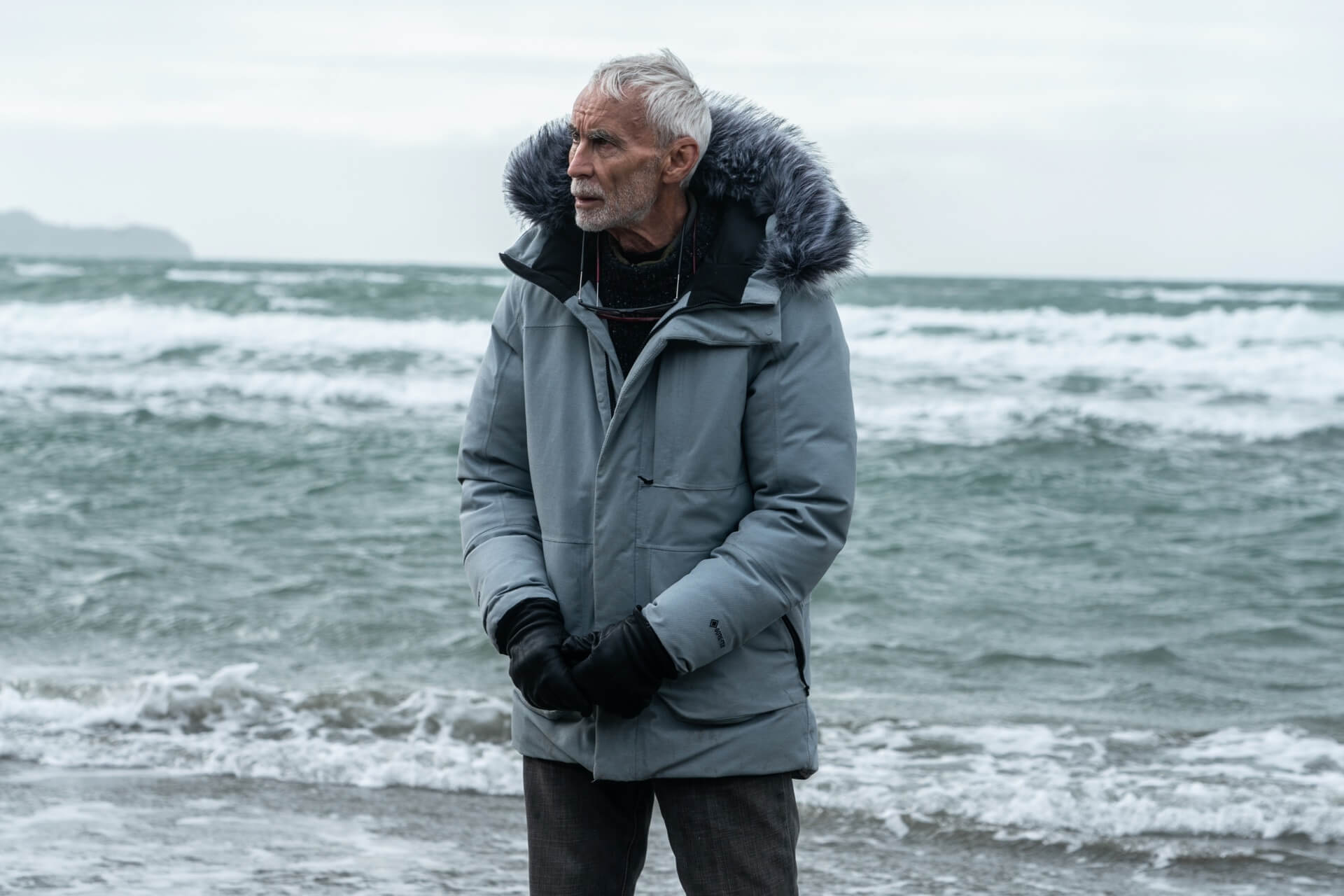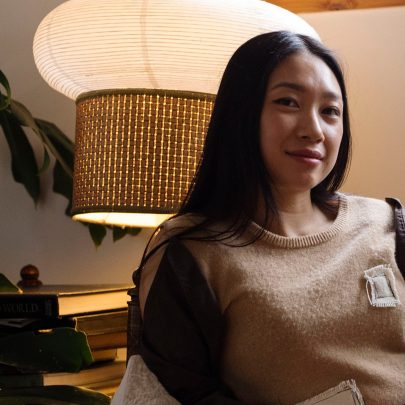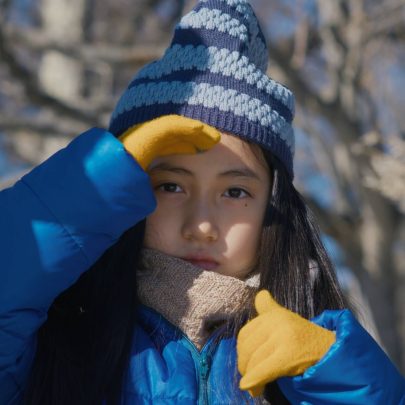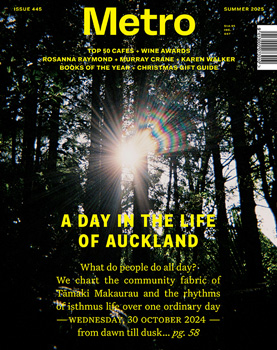Feb 20, 2023 Film & TV
I caught up with Lee Tamahori at the wrap party for The Convert at Ponsonby’s Longroom, where he was signing off on the epic two-month shoot of this major new New Zealand movie. I’ve always been a fan of Tamahori, since we both worked in advertising a lifetime ago. People have forgotten he did some amazing television commercials before he became a global sensation, moving from Steinlager and Anchor to Once Were Warriors and the Cannes Film Festival.
At 72, Tamahori is a small-framed, intense man. You get the sense he likes to talk film and nothing else. He fixes you with a fierce intense eye and doesn’t do chat. To get along with him, it helps to have an encyclopaedic knowledge of film history.
The shoot went extremely well, I was told. Two months before the wrap party, I’d gone out to Whatipū at 5.30am for the blessing of the site for the opening sequences. Crew, extras and stars Guy Pearce and Te Kohe Tuhaka stood amidst an 1830s village, constructed in West Auckland and reassembled on the black Whatipū sands. A storm had blown in from the Tasman, and the Manukau Bar was roaring like a soundtrack in the background as the local kaumātua and Pita Turei called on the ancient gods of sea and wind to get this movie off the ground. It was a deeply emotional moment.
I had helped to get consents for the production through Auckland Council, which had proved to be a bloody nightmare. So much for the council’s talk of being a movie-friendly city. Ordeals like the one they’d put this production through will be off-putting for future productions — not ideal in a year which had seen the largest-budget television production in history pack up and leave for the United Kingdom. But here we were in a storm, blessing the production, and the rest, I gather, was a dream. Tamahori and his longtime producer Robin Scholes got the movie in the can and into the editing suite in preparation for its release in mid-2023.
At the party, Tamahori was warmly greeted by the cast and crew. You could see there was huge respect for him, especially for the performance he’d gotten out of his characters and his crafting of complex and large-scale battle scenes. I wanted to talk to this director at the top of his game about his life and work.
BOB How did you get into this business?
LEE When I was 16, I bought a camera. It was a Rolleiflex, probably one of the greatest cameras ever made. I remember looking down the lens and just knew I was made to be a photographer. I was also crazy about film. I had started to go to the movies when I was about 12 and I just loved what happened on the screen.
BOB I started life as a projectionist and I know the magic of seeing something happening in the dark that transports you into a world that you hadn’t believed possible in New Zealand. That compelling relationship between an audience and the screen. You understood that.
LEE I did really like foreign films. They were hard to find, but in Wellington, where I was born and lived, the occasional festival would come along. Wellingtonians seemed to be very interested in the quirky, the compelling and the sensual — more so than other parts of New Zealand. So I saw movies like The 400 Blows from Truffaut and Ran from Japanese masters like Kurosawa. They shaped my thinking and my life in movies. I also fell in love with Westerns. They don’t make them now — young audiences wouldn’t have a clue about the genius of John Ford, who right through the 1950s and early 60s directed Westerns that were masterpieces. They still stand up as epic wonders of filmmaking. Spectacular in their locations and storylines.
BOB Did you incorporate any of this into The Convert? You’re clearly interested in the development of characters against a sensational background — I felt that at Whatipū. But you then continue to mould the film and the characters your way.
LEE Of course you’re influenced by your history and how you have seen film, and you instinctively know how to develop characters as part of the story. In The Convert, I had a very complex character who is based on a merger of many of the early missionaries to New Zealand, who were both good and bad. Guy Pearce plays a missionary lay preacher, Thomas Munro, with a violent past. His faith is put to the test when he finds himself caught in the conflict at the beginning of the Musket Wars. Pearce is such a professional that we had immediate understanding on how we could dig into this complex character. It’s a violent film, but it’s also a deeply moving and complex tale, written by Shane Danielsen and myself after a screen story by Michael Bennett.
BOB Clearly this is very much your film. Will you take a major promotional role in its PR journey? You haven’t done this recently — you’ve tended to stay in the background as the director. But this film belongs to you.
LEE I’ve always felt humbled by the films I’ve made, but this has been such a passionate project I’ve decided that it will have a ‘possessory credit’, to use the film term. I’m proud that we will release it as ‘A Film by Lee Tamahori’. The name above the lights.
BOB You’ve returned to New Zealand after living overseas as a hot Hollywood property, shooting award-winning box office knockouts like Die Another Day (2002) with Pierce Brosnan and Mulholland Falls (1996) with Nick Nolte and John Malkovich. Hollywood at its best! How did you get the job of directing Mulholland Falls?
LEE The studio asked me to come and look at some scripts. It was in a pile that had been passed over — a number of big directors had looked at it and thought it too hard to do. I took the script home and read it over the weekend and knew I wanted to do it. It was a great success for me and it still looks sensational.
BOB Your portfolio of work ranges from Once Were Warriors (1994) to James Bond to Next (2007), your first venture into science fiction. Can you tell me about flirting with sci-fi? I thought Next was a great film — a really interesting story with a super-sized budget — but the audience didn’t get it. Will you try again with sci-fi?
LEE I’ve always been in awe of 2001: A Space Odyssey. I think it’s one of the finest films ever made, and when people ask me what my two top movies are I say 2001: A Space Odyssey and the Peckinpah bloodbath classic The Wild Bunch. I’ve always wanted to make a movie that could rival Alien, which is really more a horror film set in space, or the Russian version of Solaris, which is one of the most chilling films ever. So there are a few more films that I’m interested in. I just have to find the time to get to them.
BOB Is there a New Zealand film on your wishlist?
LEE You bet. I Shall Not Die, the story of the extraordinary rebel Māori leader Tītokowaru, who killed von Tempsky, has just got to be made. I’ve come so near to making it but other projects have got in the way. His life and mission is movie magic.
BOB I heard you passed on Whale Rider, but went with Witi Ihimaera’s The Patriarch [2016, released as Mahana in New Zealand], which is interesting. As much as I liked Whale Rider, it drifted into Disney territory and could have done with a sharper edge, which you might have given it.
LEE If I had made Whale Rider, which I hold in high regard, I would have changed the ending and merged the main character into a new whale form. Combining sci-fi with legend would have added a deeper sense of imagination to the storyline… But once a film is made, it’s made. There’s no going back.
BOB Were you completely happy with Once Were Warriors? At the time it was so controversial and raw, and many critics said it would do enormous harm to how Māori are perceived in this country. I thought it was a perfect film. A brutal, confronting piece of cinema.
LEE Following the release of my film, New Zealand took a serious look at itself — the violence and brutality that occurs in many homes and is covered up. After its release, women came forward and continued the call that this had to stop. I remember you in Waitākere, Bob, started the first big campaigns that said violence needs to be called out, exposed and dealt with. I think Once Were Warriors put a stark spotlight on the truth of domestic violence that wasn’t there before I made the film.
BOB What are you watching now?
LEE I have found the remarkable Twilight Zone series. It’s considered one of the most important TV series ever made and after all these years it’s still incredibly compelling. I think it will be looked at in 500 years if we are still around. The original series in black and white — the scripts and storylines are phenomenal. The directing and acting, even in those times, broke all the rules. I just love it. It’s so watchable — filmmaking at its best. Ahead of its time.
BOB Your Steinlager ad about the protest at Mururoa has been on our screens all winter — it’s a nice piece of filmmaking combining old footage with new action. And you made some terrific television commercials after you founded Flying Fish in the 1970s, making a name for yourself in the 80s with the Anchor series. That was a breakthrough in taking a basic household product and developing a family story into an early version of Shortland Street. TV commercials must sharpen your skills for condensing time and style, which you can then use in a longer format.
LEE That’s how I see film working. To capture a moment or a mood that can move the story forward. I felt I got that in the last few weeks when we moved The Convert around the North Island from Whatipū to South Head on the Kaipara. As they say, The Convert is a really engrossing, page-turning story at a time of turbulence — a story of cruelty, with a lack of understanding of how the future was unfolding in this new country. I can hardly wait to sit in a cinema with an audience and gauge their reaction. I think they will love what they see.
The Convert will be in cinemas in mid-2023.
–






